10 Best German Translator Apps for Accurate Translation (Free & Paid)

German can be intimidating. With its notoriously long compound words, four grammatical cases, and precise word order, it’s a language that demands focus and patience. But AI-powered translator apps make it far more approachable, helping travelers, learners, and professionals communicate naturally without getting lost in the details.
Today's top translation apps use advanced AI to understand context, preserve tone, and produce translations that actually sound like something a real person would say. In this guide, we list the 10 best German translator apps available right now, covering everything from free options for casual travelers to professional-grade tools for businesses that can't afford mistranslations.
10 Best German Translator Apps Reviewed & Compared
The table below provides a quick overview of each app's standout feature, language support, and pricing before we explore them in depth.
| German Translator App | Standout Feature | Number of Supported Languages | Pricing |
| DeepL | Exceptional accuracy for German text translations | 37 | Free version available; Individual plan $8.74/month (billed annually); Team plan $28.74/month (billed annually) |
| Maestra | Real-time voice translations with AI voice cloning | 125+ | Free trial available; live translation plans start at $79/month |
| Linguee | Context-based translations with real-world German sentence examples | 25 language pairs | Free |
| Google Translate | Multi-input translation (text, voice, camera, handwriting) with offline mode | 133+ | Free |
| PONS | Comprehensive dictionary with grammar, punctuation, and usage notes | 50 (dictionaries) and 40 (text translation) | Free version available; Premium $29.99/year |
| iTranslate | Voice-to-voice German translation with offline mode | 100+ | Free version; Pro $9.99/month or $99.99/year |
| dict.cc | Extensive German vocabulary with community contributions | 50+ language pairs | Free |
| Microsoft Translator | Real-time multilingual meetings with Microsoft 365 integration | 100+ | Free for personal use; Enterprise plans via Microsoft 365 |
| TalkPersona | Instant voice-to-voice browser-based translation | 18 | Free |
| Speak & Translate | iOS-exclusive translation with Apple Watch integration | 100+ | Free version; Premium $7.99/month |
1. DeepL
Best for: Users who prioritize translation accuracy and natural-sounding German text above all else.
DeepL has earned its reputation as the most accurate translator for German, often producing results that rival human translators. Developed by a German company, it understands the nuances of German grammar, including proper case usage, gender agreement, and verb placement. DeepL excels at maintaining the original meaning while producing translations that sound natural to native German speakers.
Pros
- Formal/informal detection (Sie vs. du) for appropriate tone
- Document translation preserves formatting
- Available on web, desktop, and mobile
Cons
- Limited to 37 languages
- Free version limits text length to 5,000 characters
Pricing: Free version available; Individual plan is $8.74 per month billed annually.
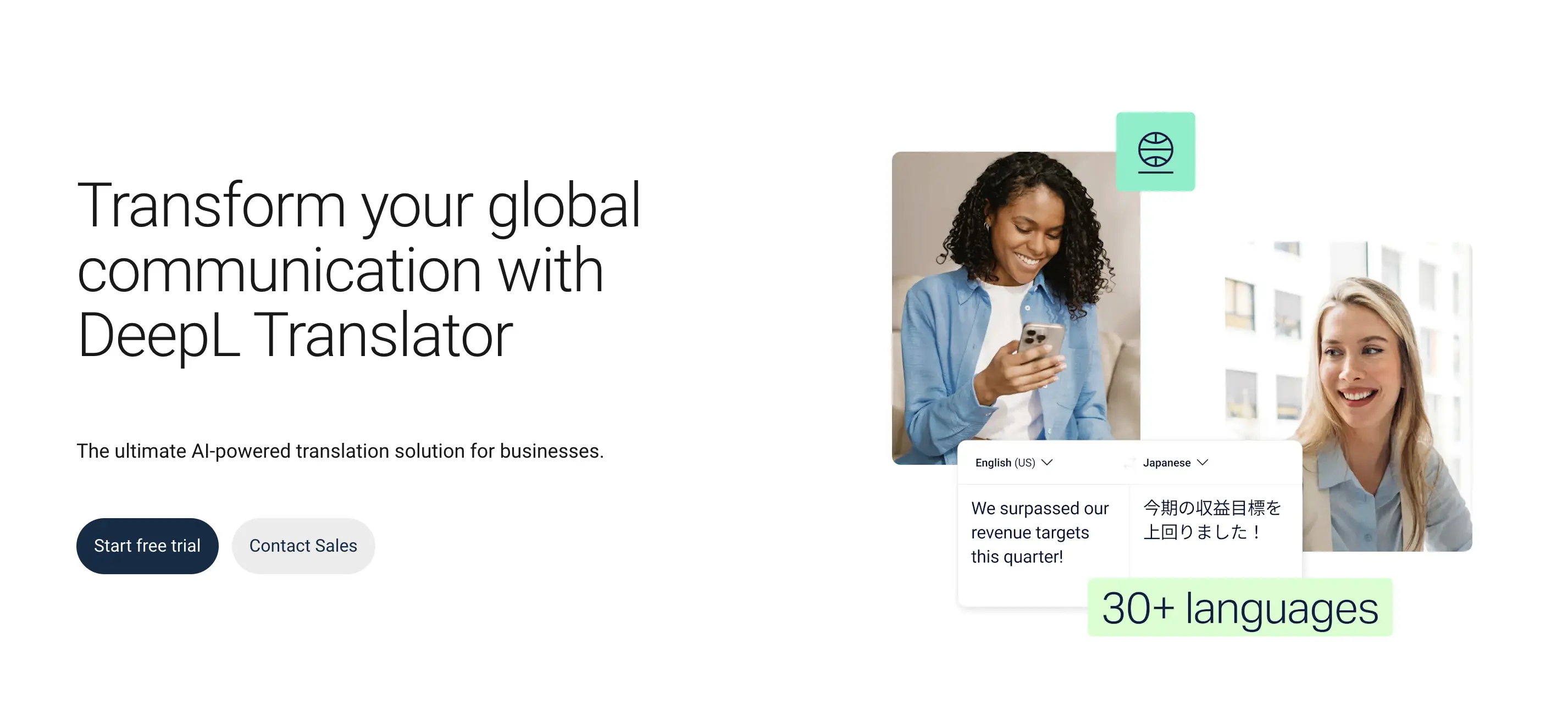
2. Maestra
Best for: Both professionals and everyday users who need real-time German voice translations.
As one of the best German translator apps, Maestra’s live German voice translator lets you communicate effortlessly across 125+ languages, including German. You can speak in your native language, and Maestra instantly translates (and revoices) your speech into German using lifelike AI voices, complete with live captions in both the source and target languages. It even allows you to clone your own voice, so your translated speech sounds authentically like you.
Pros
- Shareable multilingual sessions where each attendee can hear the conversation in their preferred language
- Works directly in your browser, no installation required
- Zoom, OBS, vMix, and Microsoft Teams integrations
Cons
- Requires a stable internet connection for live voice translation
- Voice cloning is limited to higher-tier paid plans
Pricing: Free trial available; live translation plans start at $79/month. Enterprise plans available with custom pricing.
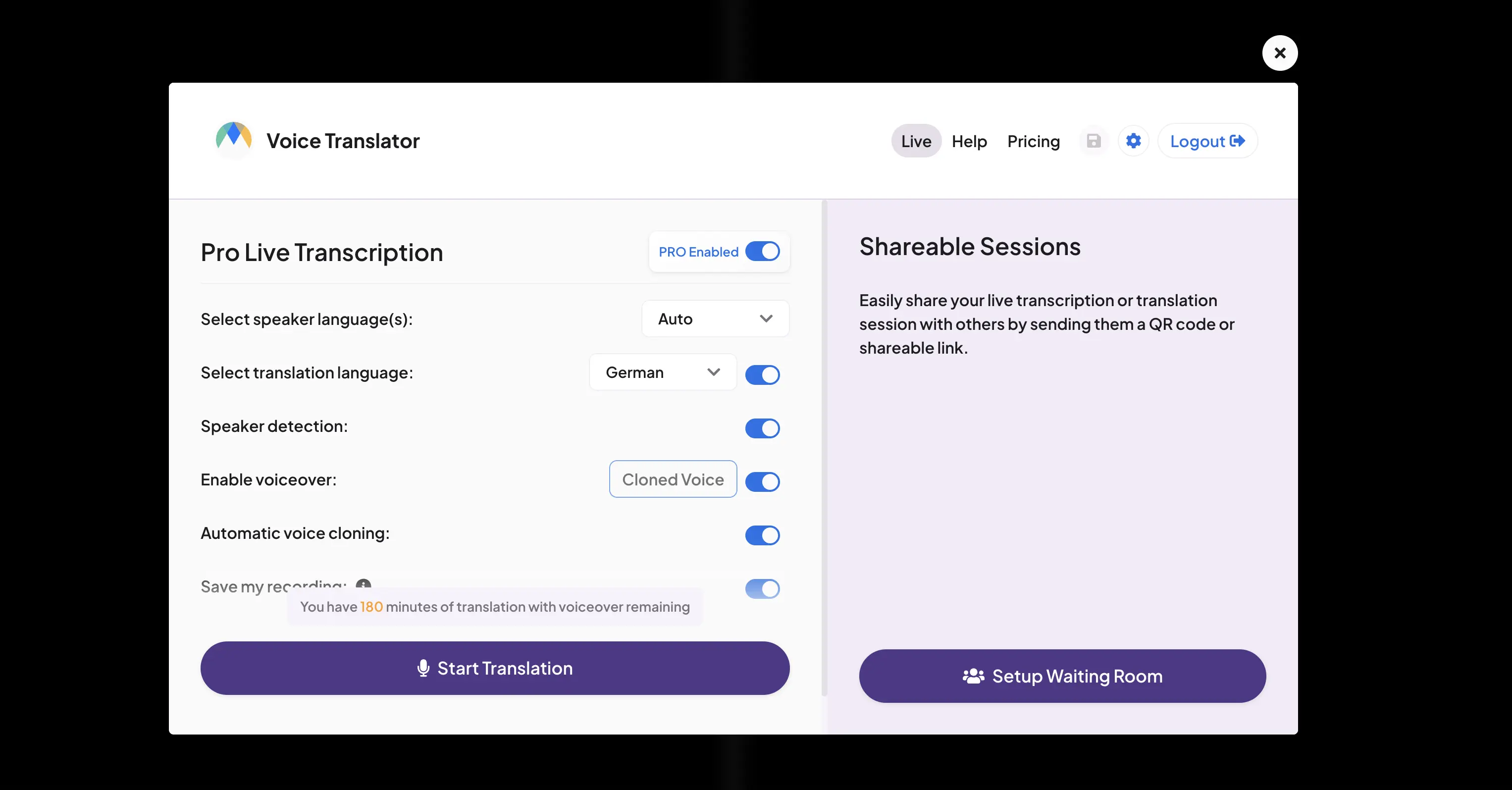
3. Linguee
Best for: Language learners and professionals who want to see how German phrases are used in real-world contexts.
Also powered by DeepL, Linguee is a dictionary app that shows you how words and phrases are actually used in authentic German texts. It pulls data from millions of bilingual documents including official EU publications, technical manuals, and professionally translated content. This makes it invaluable for understanding subtle differences in meaning and finding the right German expression for specific contexts.
Pros
- Real-world usage examples
- Completely free with no limitations
- Offline mode available with downloaded language packs
Cons
- Focuses on contextual examples rather than instant translation
- No live or voice translation features
Pricing: Completely free.

4. Google Translate
Best for: Travelers and everyday users needing a free, versatile German translator with multiple input methods.
Google Translate remains the most accessible German translator app available. It handles text, voice, camera, and handwriting input in 133 languages, making it perfect for tourists navigating German cities. The conversation mode enables real-time dialogue between German and other languages, while the camera feature can instantly translate German signs, menus, and documents.
Pros
- Offline German translation with downloaded language packs
- Conversation mode for two-way German dialogues
- Completely free with unlimited translations
Cons
- Accuracy can drop for complex sentences
- May struggle with technical or specialized German vocabulary
Pricing: Completely free.

5. PONS
Best for: Serious German learners and professionals who need comprehensive dictionary features alongside translation.
PONS is a respected German dictionary publisher that brings decades of linguistic expertise to its digital platform. Beyond simple translation, PONS provides detailed grammar explanations, conjugation tables, and usage notes that help you understand how German really works. It's particularly valuable for learners who want to grasp the "why" behind translations, not just the "what."
Pros
- Created by German language experts
- Audio pronunciation from native German speakers
- Offline mode available
Cons
- Interface can feel cluttered with extensive information
- Free version includes advertisements
Pricing: Free version available; Premium version is $29.99 for one year.
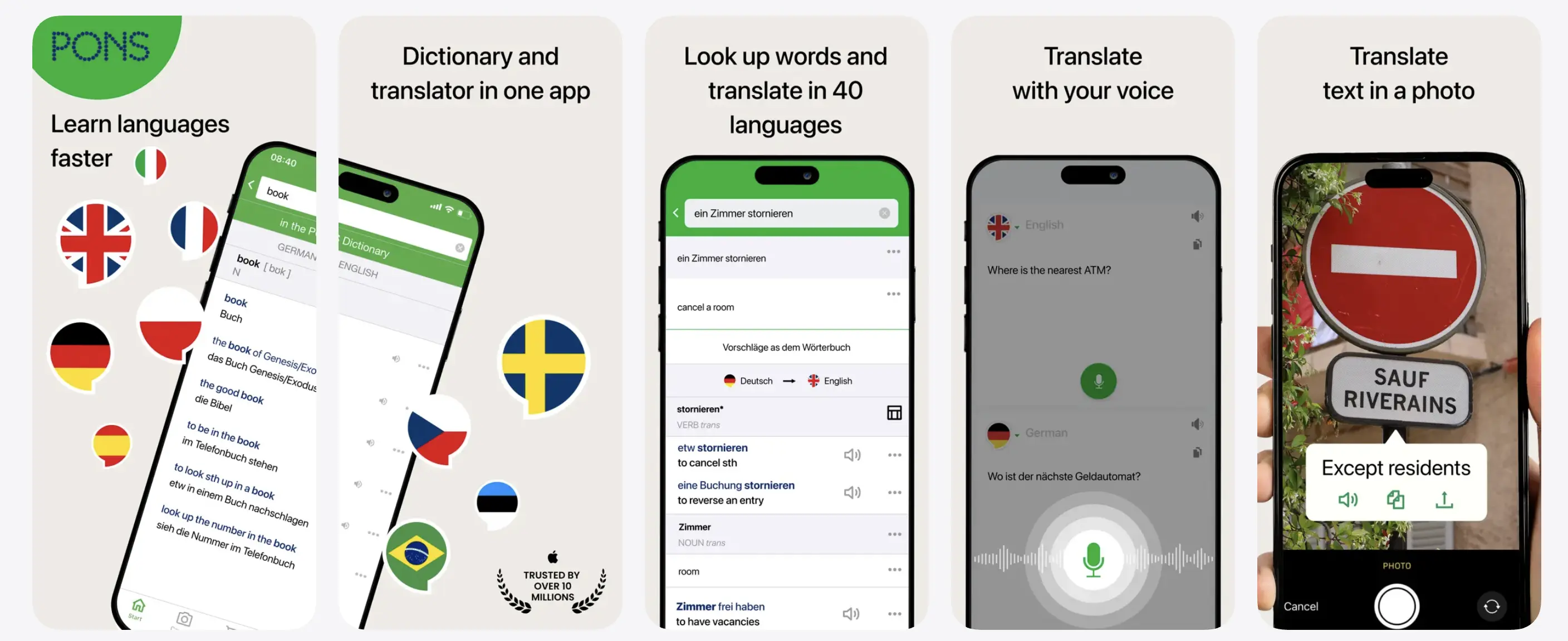
6. iTranslate
Best for: Users seeking smooth voice-to-voice German translation with high-quality audio output.
iTranslate delivers polished German translation with natural, clear voice output that accurately reflects German pronunciation. The app's voice recognition handles German umlauts (ä, ö, ü) and special characters effectively, and its conversation mode enables fluid two-way dialogue. The interface is intuitive and responsive, making it easy to communicate in German even if you've never studied the language.
Pros
- Fast voice recognition for German input
- Offline German translation in the Pro version
- Clean, user-friendly interface
Cons
- Free version is limited to 3 translations per day
- Voice features require internet connection in free version
Pricing: Free version with limitations; iTranslate Pro costs $9.99/month or $99.99/year.
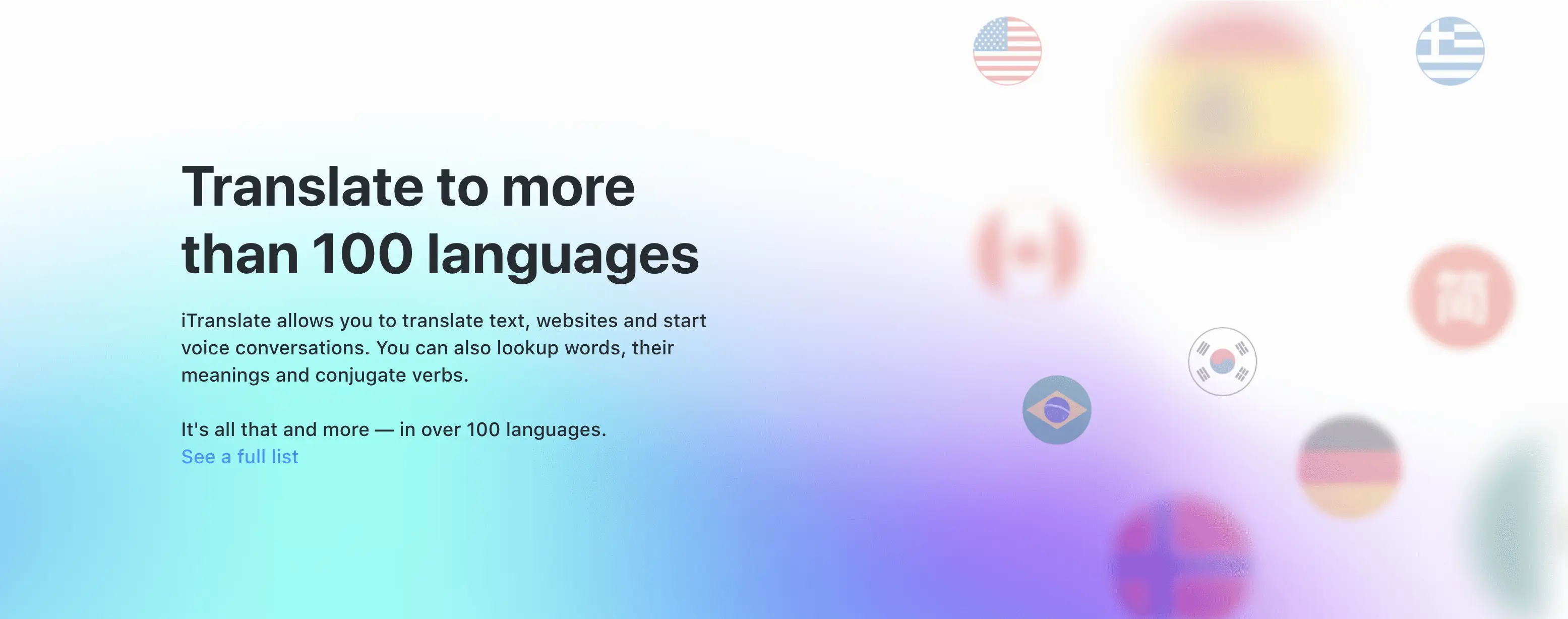
7. dict.cc
Best for: Advanced German learners and translators who need extensive vocabulary coverage and specialized terminology.
Dict.cc has become the go-to resource for serious German learners and professional translators. It features one of the most comprehensive German-English dictionaries available, with over 1.9 million entries including technical terms, slang, and regional expressions. The community-driven approach means the database constantly grows with new vocabulary, idioms, and usage examples contributed by native speakers.
Pros
- Massive vocabulary database with specialized German terminology
- Works completely offline with downloaded dictionary files
- Forum where users can ask about difficult German translations
Cons
- Interface is basic and outdated
- Primarily a dictionary rather than a full translation tool
Pricing: Completely free.
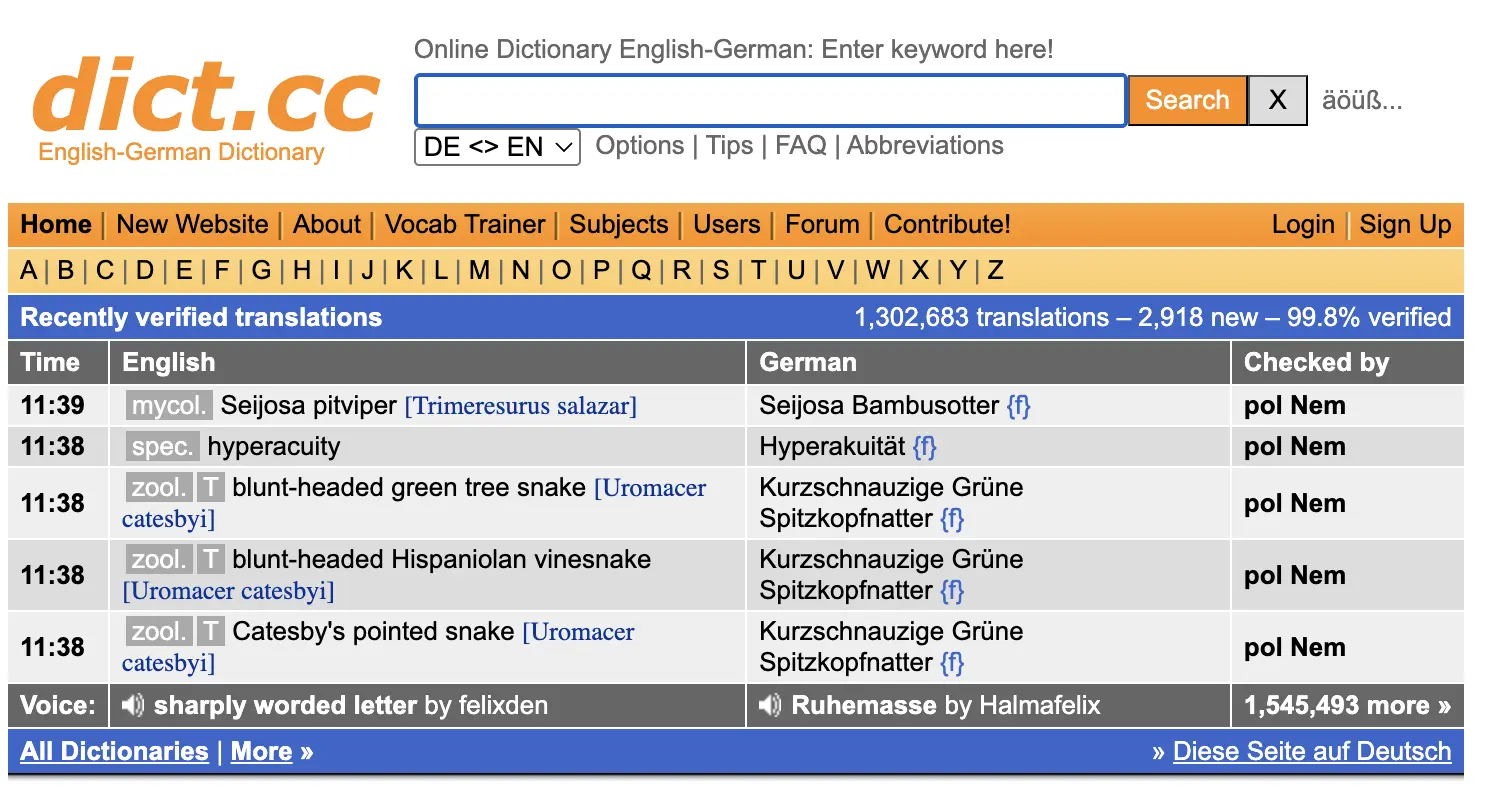
8. Microsoft Translator
Best for: Business professionals conducting multilingual meetings that include German participants.
Microsoft Translator excels in professional environments where German translation needs to be reliable. Up to 100 people can join a shared translation session, each speaking their own language while receiving real-time German translation on their devices. The integration with Microsoft 365 makes it effortless for businesses already using the Microsoft ecosystem.
Pros
- Multi-participant conversation mode for German meetings
- Real-time German transcription with text output
- Integration with Microsoft Office applications
Cons
- Voice recognition accuracy may vary with different German dialects
- Interface feels less modern than competing apps
Pricing: Free for personal use; enterprise features available through Microsoft 365 subscriptions.
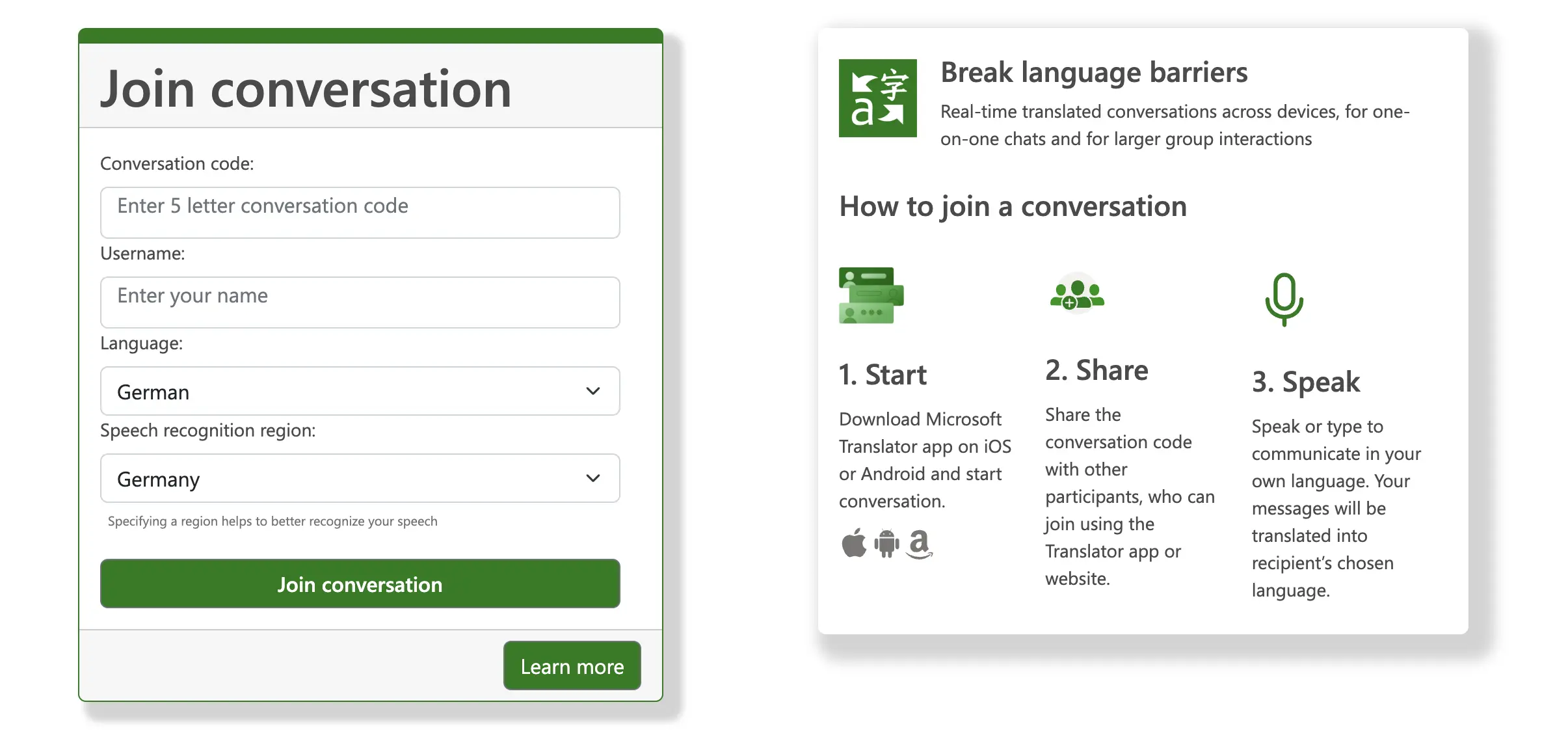
9. TalkPersona
Best for: Travelers and casual users who need quick live voice-to-voice German translation.
TalkPersona offers a free instant voice translator option that supports German amongst other major languages. It runs directly in your browser, so there’s no need to install or register anything. The translation quality is impressive for short, everyday interactions, helping users bridge language gaps while traveling, ordering food, or asking for directions in Germany.
Pros
- Simple, intuitive interface for quick use
- Clear audio output that repeats translations aloud for both speakers
- Lightweight design that performs smoothly even on low-end devices
Cons
- Focuses mainly on live speech, lacks text or document translation
- Limited language support compared to options like Maestra
Pricing: Completely free.
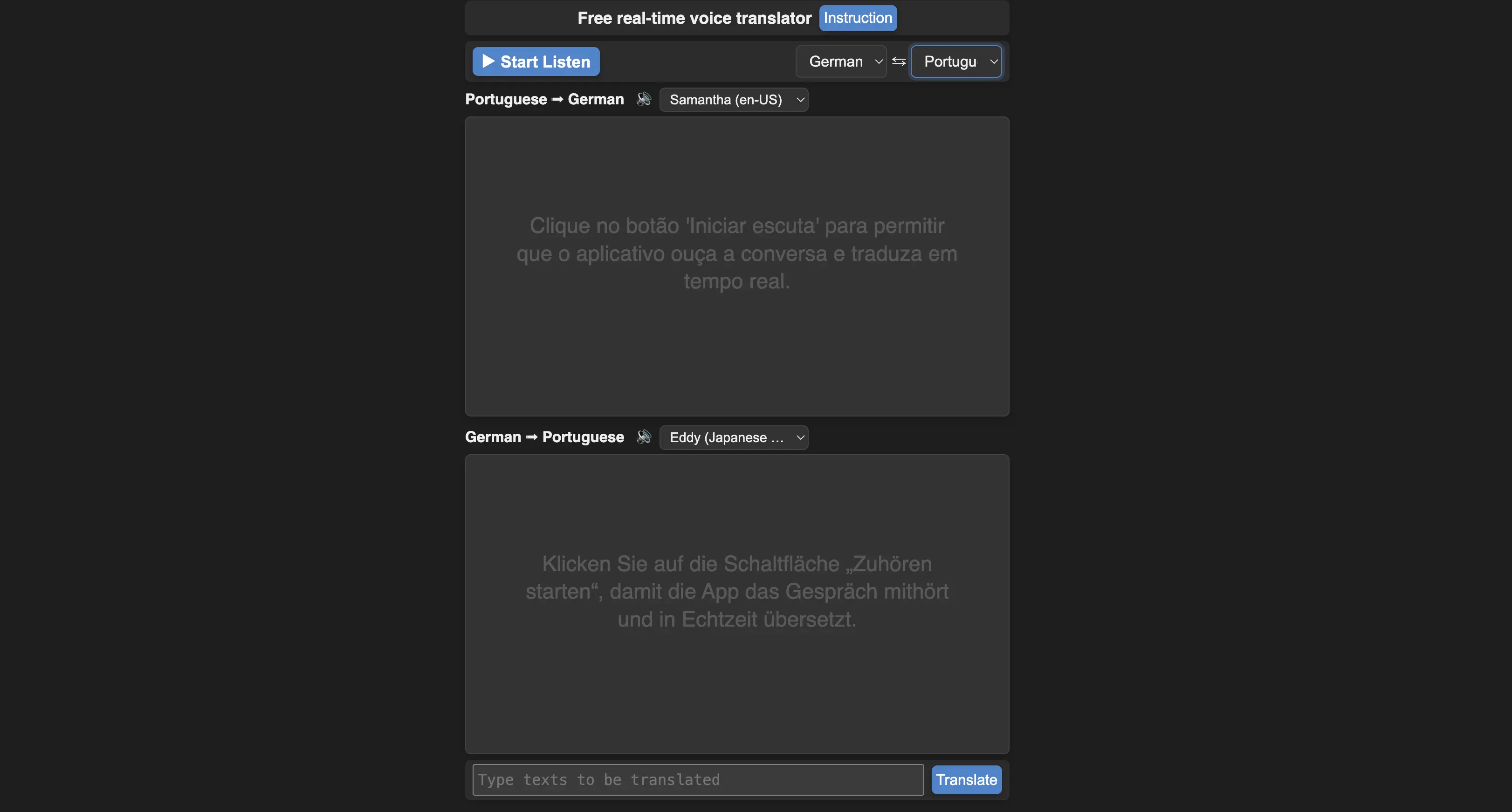
10. Speak & Translate
Best for: Apple users traveling to German-speaking countries who need offline translation capabilities.
Speak & Translate is a powerful iOS-exclusive translation app that delivers dependable German translations across text, voice, and conversation modes. Its standout feature is the ability to translate offline using downloadable German language packs, which is a major advantage when traveling in regions with limited internet access. Plus, the Apple Watch integration allows for hands-free German translation.
Pros
- Real-time voice recognition and playback for both speakers
- Voice speed adjustment for clearer German pronunciation
- Integrated with iCloud for syncing translations across Apple devices
Cons
- iOS-only; unavailable for Android users
- Some advanced features require the Premium version
Pricing: Free version with limitations; Premium subscription starts at $7.99/month.
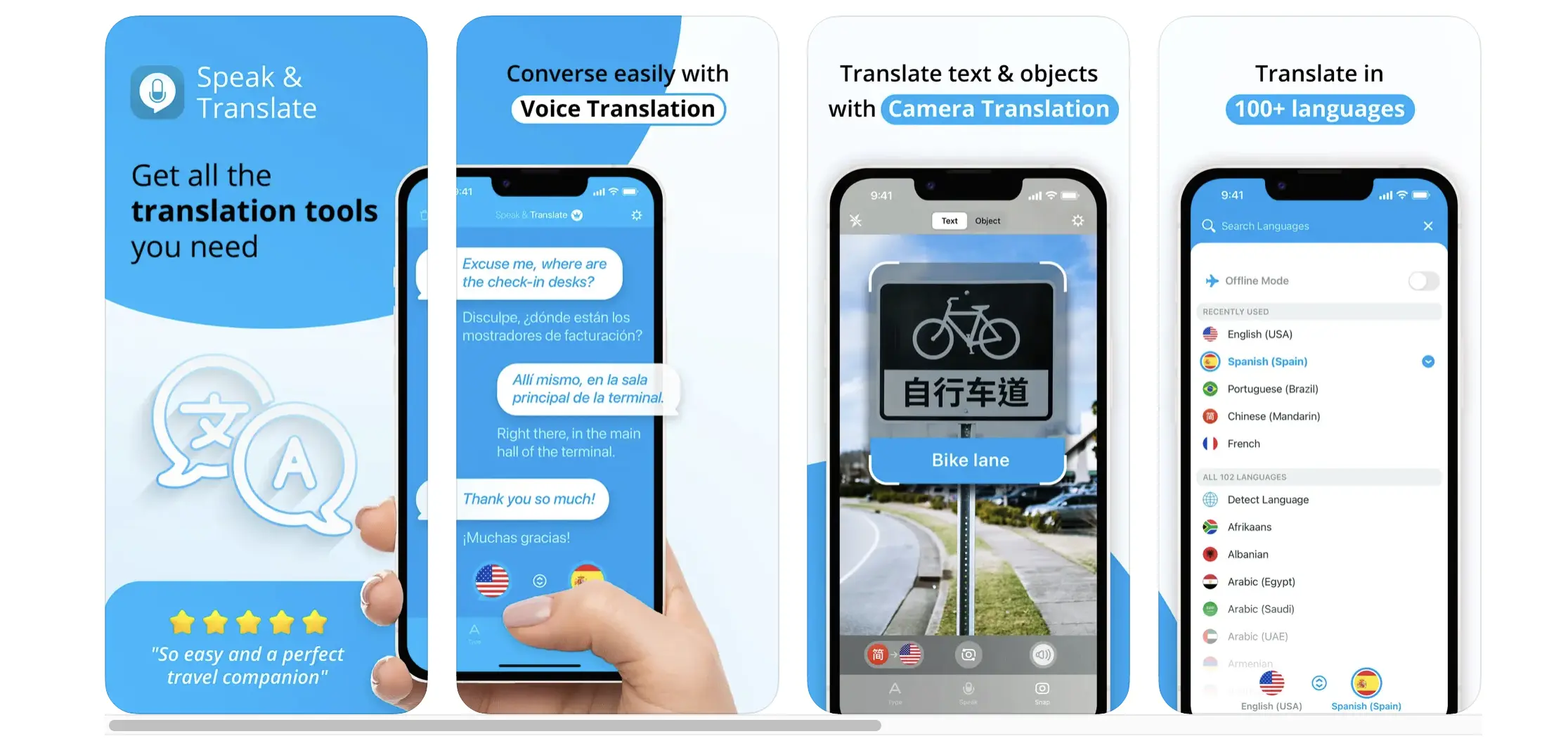
Smart Tips for Using German Translator Apps
Whether you’re translating a conversation in real time or decoding a complex document, even the best German translator apps perform best when used strategically. Knowing how to prepare, speak, and check translations can dramatically improve accuracy and naturalness.
Below are a few actionable tips to help you get the most out of any German translation app, from live voice tools to text-based platforms.
Live Voice Translation
Voice translator apps are incredibly useful when you’re traveling or communicating with native German speakers, but small adjustments in how you use them can make a big difference.
- Speak clearly and at a natural pace. Avoid rushing your sentences or using heavy slang, so the speech recognition model can understand your words accurately.
- Minimize background noise. Live translators struggle with overlapping sounds. When possible, move to a quieter area or use earbuds with a built-in mic to isolate your voice from environmental noise.
- Test before important situations. Before relying on live translation for a meeting or event, run a short practice conversation to check latency, accuracy, and pronunciation handling.
- Check the tone and formality. German differentiates between du (informal) and Sie (formal). While some apps like DeepL or Microsoft Translator can detect tone, it’s worth confirming the correct form for your context.
- Download offline language packs. Before traveling, download German for offline use in apps like Google Translate or Speak & Translate. This ensures you can still translate conversations even without an internet connection.
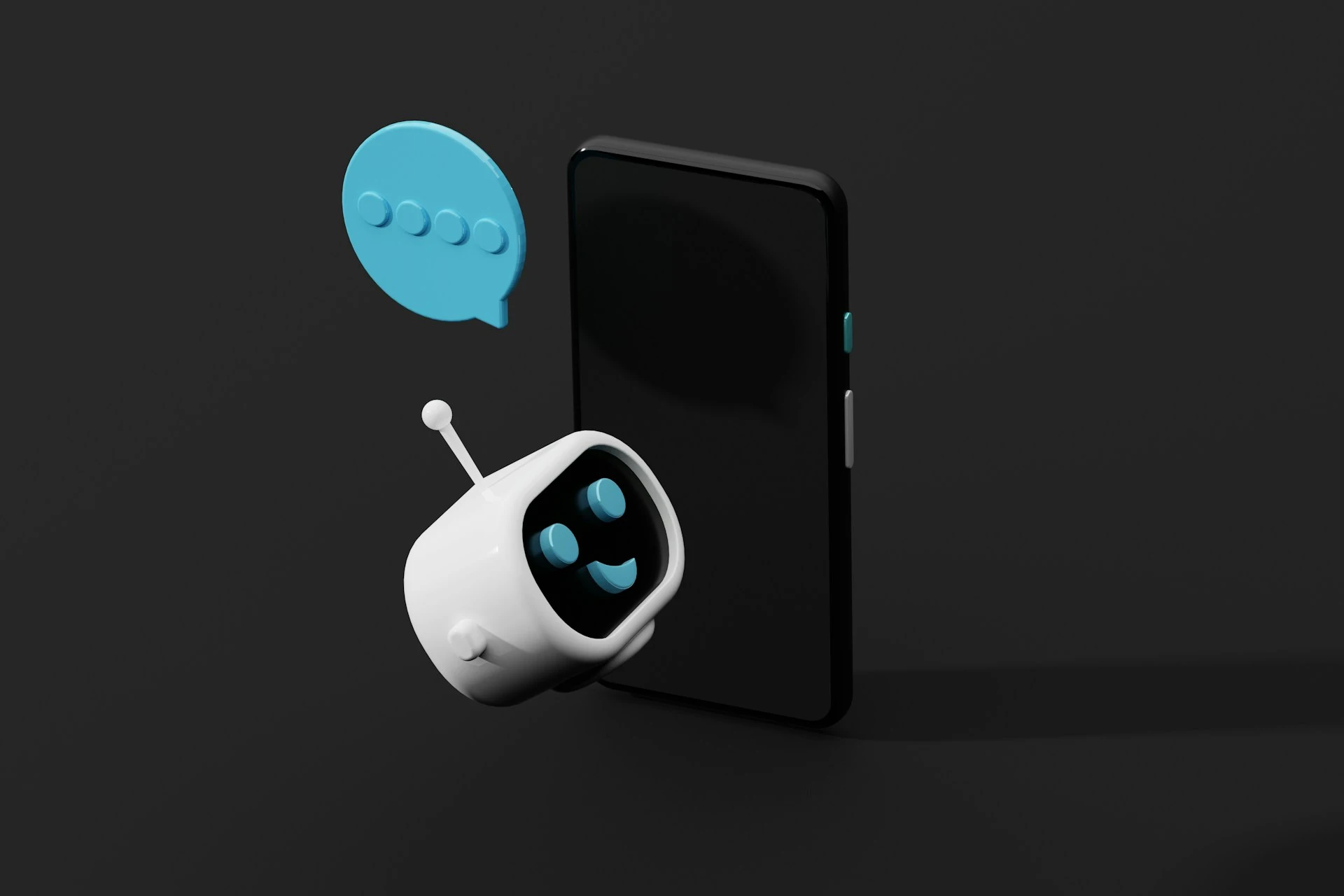
Text Translation
Text translation tools are ideal for written communication, study, and professional use, but they work best when you prepare the content properly.
- Proofread before translating. Spelling errors, missing punctuation, or inconsistent capitalization can mislead translation algorithms. Clean input text equals more accurate German output.
- Translate in small sections. Splitting long documents into shorter parts helps you maintain meaning and prevents small mistakes from adding up.
- Watch out for idioms and expressions. German often has no direct equivalent for English idioms (“hit the books,” “piece of cake”). Rephrase idioms into literal language before translating for better accuracy.
- Translate names and technical terms carefully. Avoid automatically translating brand names or specialized jargon. Proper nouns and product names should stay as they are.
- Leverage built-in editing tools. Some translation appslike DeepL Write let you refine the translation directly, adjusting tone, phrasing, and clarity for a more natural German result.

💡 Final tip: Combine these habits (clear speech, well-prepared text, and light post-editing) and your translations will sound far more natural and professional, no matter which German translation app you use.
Conclusion
The apps reviewed in this guide demonstrate the current state of the art in German translation. While no automated system matches human translator expertise for highly specialized content, these tools serve the vast majority of translation needs with remarkable accuracy.
Here's your cheat sheet for choosing the right German translator app for you:
- 🎯 DeepL — Very high accuracy, German company, neural translation excellence
- 🎙️ Maestra — Professional real-time voice translation with AI voice cloning
- 📚 Linguee — Contextual learning through authentic German usage examples
- 🌍 Google Translate — Comprehensive free solution with multi-modal input
- 📖 PONS — Authoritative German dictionary with linguistic depth
- 🗣️ iTranslate — Smooth voice translation with natural German pronunciation
- 💬 dict.cc — Extensive vocabulary database for advanced learners
- 💼 Microsoft Translator — Enterprise integration for business environments
- 🌐 TalkPersona — Lightweight browser-based voice translation
- ✈️ Speak & Translate — iOS-optimized with offline functionality
These apps represent the best available tools for bridging the gap between German and other languages. Select based on your primary use case and budget, and don't hesitate to use multiple apps for different purposes.
Frequently Asked Questions
What is the most accurate German translator app?
DeepL is widely regarded as the most accurate German translator app, thanks to its advanced deep learning technology. Developed in Germany, its AI engine excels at handling complex sentence structures, verb placement, and idiomatic expressions. Meanwhile, for real-time speech translation, Maestra stands out with its precise, natural-sounding German voice translations.
What is the best free German translator?
Google Translate is the best free German translator for everyday use. It supports text, voice, and camera translation, making it incredibly versatile for travel or casual communication. Although it’s less nuanced than premium tools like DeepL, it’s unbeatable for quick, everyday German translations.
What is the best German to English voice translator?
One of the best German to English voice translators is Maestra, offering real-time speech translation with natural AI voice output. It allows you to speak in one language and instantly hear your words in another. iTranslate is another strong option for everyday use, with quick voice translations and offline functionality for travelers.
What is the best German translator app for business?
For business communication, two powerful German translator apps are Microsoft Translator and Maestra. Microsoft Translator integrates seamlessly with Microsoft 365, making it ideal for companies that need reliable document, text, and voice translation within their existing workflow. Maestra, meanwhile, is perfect for multilingual meetings, offering real-time German translation where every participant can hear the conversation in their chosen language.
What is the best German translator app for students?
The best German translator apps for students are Linguee and PONS, both offering excellent learning support alongside accurate translations. Linguee helps students understand real-world German usage through example sentences from authentic texts. PONS, on the other hand, combines dictionary precision, grammar help, and a built-in vocabulary trainer.
Can translator apps handle German dialects?
Today’s translator apps are far better equipped to handle German dialects like Austrian German or Swiss German, thanks to advances in speech recognition and contextual AI. While strong regional accents can still pose challenges, most tools can now capture the overall meaning quite well.
Can translator apps translate compound German words?
Yes, most German translator apps can translate compound words. They break the compounds into smaller units to produce clear, precise translations. Still, unique or highly technical compounds may confuse even advanced apps.
Do German translator apps understand formal vs. informal language?
Yes, most German translation apps are now smart enough to distinguish between formal and informal speech. This makes it easier to communicate appropriately in both personal and professional contexts. However, reviewing the translation is still helpful to ensure the formality matches your intended audience.
